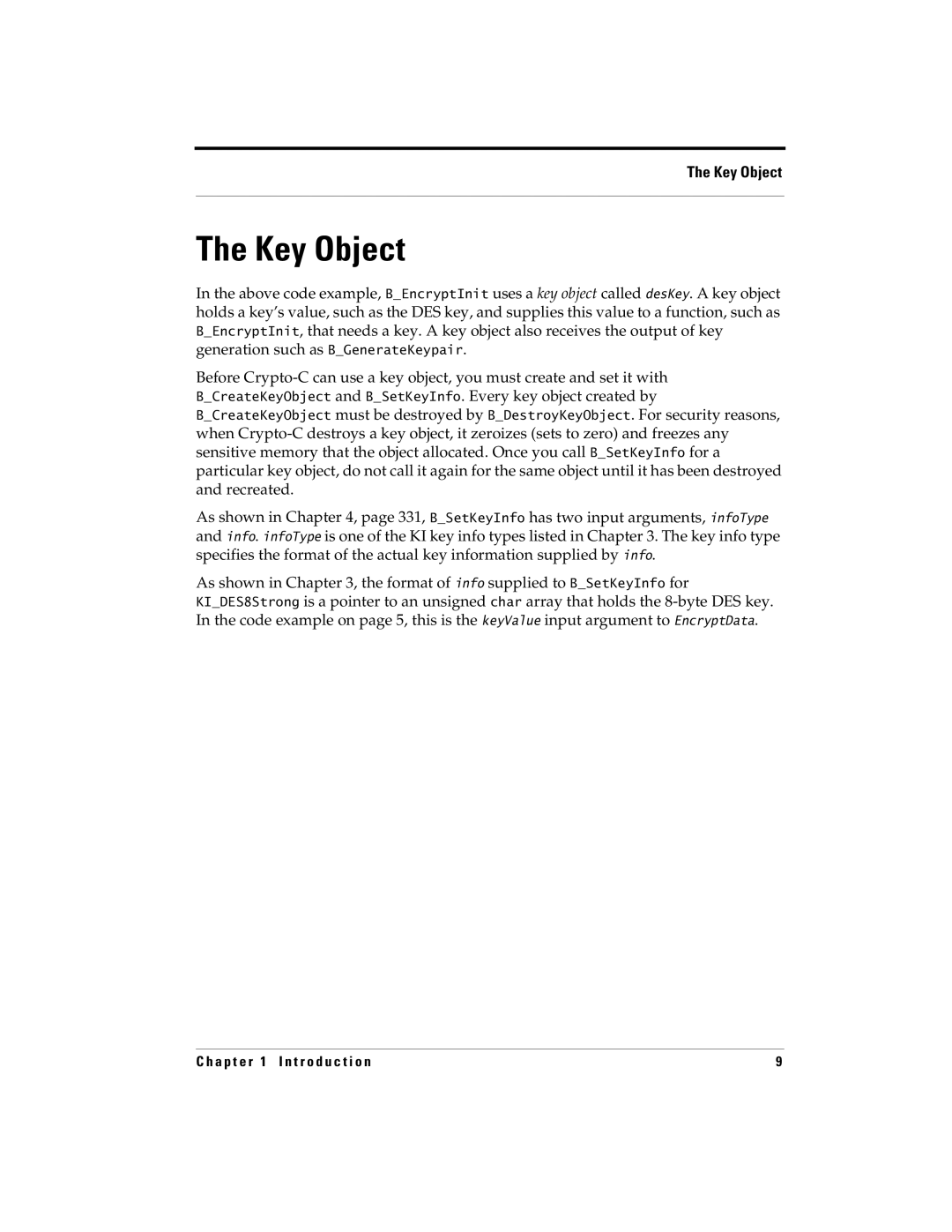
The Key Object
The Key Object
In the above code example, B_EncryptInit uses a key object called desKey. A key object holds a key’s value, such as the DES key, and supplies this value to a function, such as B_EncryptInit, that needs a key. A key object also receives the output of key generation such as B_GenerateKeypair.
Before
As shown in Chapter 4, page 331, B_SetKeyInfo has two input arguments, infoType and info. infoType is one of the KI key info types listed in Chapter 3. The key info type specifies the format of the actual key information supplied by info.
As shown in Chapter 3, the format of info supplied to B_SetKeyInfo for
KI_DES8Strong is a pointer to an unsigned char array that holds the
C h a p t e r 1 I n t r o d u c t i o n | 9 |
